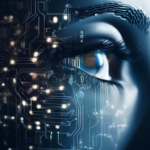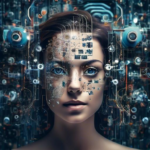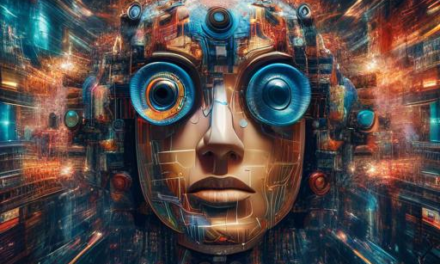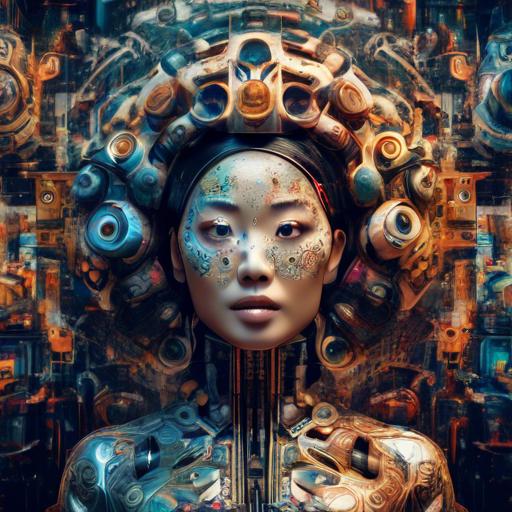In the kaleidoscopic realm where pixels meet poetry and algorithms dance with abstraction, we find ourselves on the cusp of a digital Renaissance. Here, the brushstrokes are lines of code, and the muses are machine learning models. It’s an exhilarating epoch where artificial intelligence takes its first tentative steps into the sacred sanctum of art creation. As this wave surges forward, it is the AI developers—the modern-day alchemists—who wield the transformative power to shape this new artistic frontier. With great power, however, comes great responsibility. This article delves into the ethical and practical onus that falls upon the shoulders of these digital conjurers, as we explore how they can thoughtfully navigate this brave new canvas while fostering a future where technology and creativity coexist harmoniously.
Table of Contents
- Understanding the Creative Power of Algorithms
- Navigating Ethical Boundaries in Automated Art
- Cultivating Authenticity in AI-Generated Works
- Safeguarding Intellectual Property in the Digital Age
- Balancing Human Creativity and Machine Learning
- Promoting Transparency in AI Art Development
- Embracing Collaboration Between Artists and Engineers
- Ensuring Accessibility and Inclusivity in AI Art Tools
- Championing Continuous Learning and Ethical Training
- The Way Forward
Understanding the Creative Power of Algorithms
Algorithms have evolved from rigid, predefined sets of instructions to innovative entities capable of generating stunning works of art. This transformative journey opens an expansive canvas where artificial intelligence plays the role of the artist, leveraging its ability to blend data and creativity. However, this evolution isn’t without its ethical and creative ramifications.
Creative Freedom vs. Responsible Creation:
- **Ownership and Attribution:** Who owns the art created by AI? Is it the developer, the AI, or an amalgamation of sources?
- **Ethical Representation:** Ensuring that generative algorithms don’t inadvertently incorporate biased or offensive elements within their creations.
- **Cultural Sensitivity:** Art often reflects societal values. AI must be mindful of cultural contexts, avoiding appropriation and misrepresentation.
To streamline the creative potential of algorithms while maintaining a sturdy ethical framework, AI developers can adopt a multi-faceted approach:
| Aspect | Action |
|---|---|
| Training Data | Source from diverse, inclusive datasets |
| Bias Mitigation | Regular audits and continual learning updates |
| Transparency | Open-source collaboration and detailed documentation |
The trick lies in balancing technological prowess with an ethical compass. AI should not only focus on producing visually or sonically appealing content but should also uphold the moral values that are revered in human artistry. By establishing a set of guiding principles, developers can nurture an AI that respects artistic integrity and cultural nuances, creating a harmonious blend of innovation and responsibility.
Ultimately, the responsibility of AI developers in art creation isn’t just about pushing the boundaries of what’s possible. It’s about fostering a new era of digital creativity that respects the sanctity of human expression, allows for shared ownership, and champions inclusivity at its core.
Navigating Ethical Boundaries in Automated Art
The rise of artificial intelligence in the realm of art creation raises pressing ethical questions that AI developers must navigate with care. As these advanced algorithms begin to co-create with human artists or even independently generate masterpieces, **responsibility delineation** becomes paramount. Developers must ensure their creations adhere to a framework that respects intellectual property, cultural sensitivity, and transparency.
Key areas where ethical boundaries intersect include:
- Intellectual Property Rights: AI developers need to implement measures that trace the origin of content, ensuring that the generated art does not infringe on existing works or plagiarize creative material.
- Cultural Sensitivity: Artistic creations by AI should be programmed to respect and understand cultural contexts. There should be systems in place to flag potentially offensive or inappropriate outputs.
- Transparency: Clear disclosure about the involvement of AI in the creation process is vital. Users and viewers should be informed whether a piece is wholly AI-generated or a collaborative effort with a human artist.
| Ethical Concern | AI Developer Responsibility |
|---|---|
| Intellectual Property | Prevent plagiarism via origin tracing and content vetting algorithms. |
| Cultural Sensitivity | Implement AI awareness of cultural contexts to avoid offensive outputs. |
| Transparency | Disclose the extent of AI involvement in artistic creations. |
In navigating these boundaries, collaboration between **developers, artists, and ethicists** is essential. Codifying ethical guidelines into AI protocols can ensure integrity in the artistic outputs. Importantly, there’s a need for continuous dialogue in the tech and artistic communities to preemptively address ethical dilemmas before they become entrenched issues.
Cultivating Authenticity in AI-Generated Works
In today’s digital age, the emergence of AI in art has unlocked unparalleled realms of creativity. Yet, to ensure these AI-generated creations resonate on a deeply human level, developers must advocate for authenticity in their digital progeny. Authenticity in AI-generated works begins with embedding core human values in the algorithms. By prioritizing empathy, cultural sensitivity, and originality, we can ensure that AI art doesn’t merely mimic but meaningfully extends human expression.
Consider a few core principles for fostering authenticity:
- Incorporate Diverse Data Sources: By drawing from a broad spectrum of cultural and historical art references, developers can create AI that appreciates and respects the richness of global artistic traditions.
- Prioritize Human Collaboration: AI-generated art should be seen as a collaborative partner to human creators. Facilitating tools that allow artists to guide and refine AI outputs can lead to pieces that genuinely reflect the vision and emotion behind the human touch.
- Maintain Ethical Standards: Developers must ensure that AI art does not inadvertently perpetuate biases or stereotypes. Constant evaluation and updating of datasets and algorithms are crucial to ensure ethical integrity.
| Principle | Implementation |
|---|---|
| Diverse Data Sources | Include artworks from different eras and cultures. |
| Human Collaboration | Integrate feedback loops for artists to adjust AI outputs. |
| Ethical Standards | Regularly review datasets for biases and stereotypes. |
Furthermore, transparency is key. When presenting AI-generated works, clearly differentiating between human and machine contributions helps audiences appreciate the symbiotic relationship. It manages expectations and fosters a deeper appreciation for the collaborative essence of AI art. Communicating the AI’s learning process, its inspirations, and the artistic choices made during creation can enhance authenticity by demonstrating the complexity and integrity behind the work.
Lastly, nurturing an environment where AI development in art involves a community of diverse voices will further cultivate authenticity. By inviting input from artists, ethicists, and cultural historians, developers can ensure a holistic approach. This collaborative ethos will not only enhance the artistic value but also support the broader narrative of respectful, inclusive innovation in the arts.
Safeguarding Intellectual Property in the Digital Age
In an era where AI-generated art is rapidly gaining traction, it’s imperative for developers to prioritize the protection of intellectual property (IP). By strategically integrating ethical guidelines, transparency, and innovative technologies, developers can safeguard the creative rights of artists and creators.
Ethical Guidelines:
- Implement comprehensive training that emphasizes the importance of respecting original work.
- Ensure AI systems are designed with robust safeguards against IP infringement.
- Adopt a stringent review process for AI-generated content before publication.
Transparency:
- Clearly document the data sources used for training the AI models.
- Provide easy-to-understand guidelines for users and developers about legal and ethical boundaries.
- Foster an open dialogue with the creative community to address concerns and improve AI systems.
| Key Area | Action |
|---|---|
| Data Sources | Use licensed, public domain, or user-consented data |
| Model Training | Regularly update ethical guidelines |
| Content Review | Implement multi-level reviews |
Innovative Technologies:
- Leverage blockchain for transparent IP tracking and ownership verification.
- Develop advanced algorithms to detect potential infringements in real-time.
- Incorporate watermarking and fingerprinting technologies to protect digital art.
Balancing Human Creativity and Machine Learning
As AI continues to evolve, its applications in the realm of art become increasingly sophisticated. A core challenge faced by AI developers lies in ensuring that the technology complements rather than overshadows human creativity. This dance between man and machine requires thoughtful planning and a deep understanding of both human artistic impulses and the capabilities of machine learning.
AI can serve as a powerful tool for artists, providing new avenues for expression and innovation. Consider the following roles AI can play in art creation:
- **Generating Inspirations:** AI algorithms can analyze thousands of artworks and identify unique patterns, offering fresh perspectives that human creators may not consider.
- **Technical Assistance:** Machine learning models can handle technically complex tasks like texture mapping or color balancing, freeing up artists to focus on conceptual and creative aspects.
- **Collaborative Creations:** Artists and AI systems can collaboratively produce works that push the boundaries of traditional art forms.
- **Accessibility and Personalization:** AI can make art creation more accessible to those with physical disabilities, offering customized tools that cater to individual needs and preferences.
However, ensuring that AI aids rather than replaces human creativity entails ethical considerations and responsible development practices. AI developers should prioritize:
- **Transparency:** Clearly disclose when AI has been used in the creation process, maintaining the integrity of the artistic work.
- **Respect for Originality:** Ensure AI-generated works do not infringe upon existing copyrights and fully attribute any traditional sources of inspiration.
- **Empathy:** Recognize the emotional labor and subjective experiences that go into art-making, facilitating tools that support rather than dilute this human element.
- **Sustainability:** Develop AI in ways that responsibly manage resources and mitigate environmental impacts, reflecting the broader value systems that many artists hold dear.
| Aspect | AI’s Role | Responsibility |
|---|---|---|
| Inspiration | Pattern Recognition | Maintain Originality |
| Technical Tasks | Automation | Retain Human Input |
| Collaboration | Partnership | Facilitate Creativity |
| Accessibility | Customization | Inclusion |
By fostering a development environment that respects and augments human creativity, AI developers have a unique opportunity to enrich the art world. Achieving a balance between human intuition and machine precision could result in an era where art is increasingly democratized and innovative, yet deeply rooted in the human experience.
Promoting Transparency in AI Art Development
In the dynamic realm of AI-driven artistry, fostering transparency is pivotal. It ensures that both the creators and the audience can trust the process and the product that emerges from AI development. When it comes to algorithmically-generated art, disclosing the methodologies, algorithms, and datasets used is essential. This not only builds trust but also allows for critical engagement and constructive feedback from a broader audience.
- Documentation: Detailed records of the development stages can illuminate how decisions were made, the challenges faced, and the innovations achieved.
- Open-source Collaborations: Sharing code and tools with the community can lead to collaborative improvements and innovations.
One robust method to promote transparency is through the publication of detailed reports that outline the data sources, algorithmic biases addressed, and ethical considerations taken. These reports should be accessible and understandable for both technical and non-technical audiences.
| Transparency Aspect | Details |
|---|---|
| Data Sources | Clearly identify origins of all datasets used. |
| Algorithmic Processes | Describe the algorithms and parameters applied. |
| Ethical Measures | Steps taken to ensure ethical standards. |
Moreover, engaging with diverse communities during the development phase can offer invaluable perspectives that help mitigate biases and foster inclusivity in AI art. This can be facilitated through regular feedback loops and inclusive forums where voices from varying backgrounds and expertise can share insights and concerns.
Ultimately, by embedding transparency into the fabric of AI art development, we pave the way for a more trustworthy and innovative future, where the amalgamation of technology and creativity can flourish without ethical quandaries. The responsibility lies heavily on the developers to ensure that the artistic creations generated by AI are not just technically proficient but also ethically considerate and openly accountable.
Embracing Collaboration Between Artists and Engineers
Incorporating the unique strengths of both artists and engineers in the realm of art creation driven by AI can lead to groundbreaking innovations. **Creativity and technical acumen** are often seen as two sides of the same coin, and bridging the gap between these domains can enhance the overall quality and impact of art projects.
- Interdisciplinary Projects: Artists can lend their creative vision to technical projects, ensuring that the final outputs are not only functional but also aesthetically appealing.
- Tools and Techniques: Engineers bring a deep understanding of new technologies, which can open up fresh possibilities for artistic expression.
- Improved Communication: Regular interactions and collaborative sessions can foster better understanding and mutual respect between these diverse groups.
The collaboration between these two fields can be further enhanced when the **roles and responsibilities** are clearly defined. Artists can concentrate on the creative and conceptual aspects, while engineers focus on the implementation and optimization of AI tools. To facilitate this synergy, here are some considerations:
| Role | Contribution |
|---|---|
| Artist | Concept development, aesthetic guidance |
| Engineer | Technical implementation, AI optimization |
By embracing these distinctions, we can ensure that each party’s expertise is fully utilized, resulting in art that is profoundly innovative yet deeply human. Moreover, encouraging a culture of **open sharing and feedback** can help perpetuate continuous improvement and inspiration among team members.
Ensuring Accessibility and Inclusivity in AI Art Tools
One pivotal aspect of developing AI-driven art tools is ensuring they are accessible and inclusive to all potential users. **Accessibility** issues often arise when AI developers neglect to consider the diverse needs of individuals with disabilities. By integrating features such as screen reader compatibility, adjustable text sizes, and keyboard navigability, these tools can be made more user-friendly for individuals with visual or motor impairments.
**Inclusivity**, on the other hand, involves a broader spectrum of considerations. For instance, art tools should support a variety of languages and cultural contexts to broaden their usability. Also, developers need to address inherent biases in the training datasets to prevent the perpetuation of stereotypes or exclusion of certain communities. This can be done by actively seeking out diverse datasets and regularly auditing algorithms for bias.
- Screen Reader Compatibility: Ensures that visually impaired users can effectively navigate the tool.
- Adjustable Text Sizes: Allows users with varying degrees of vision impairment to comfortably read and interact with the tool.
- Keyboard Navigability: Essential for users who cannot use a mouse due to motor impairments.
- Multilingual Support: Facilitates a wider reach by accommodating non-English speakers.
- Bias Audits: Regular checks to minimize algorithmic bias, promoting fair and unbiased art creation.
Implementing these features not only enhances user experience but cultivates a more **equitable** environment for artistic expression. For many, art is a powerful form of communication and emotional release. By prioritizing both accessibility and inclusivity, AI developers can democratize access to these expressive tools, ensuring everyone has the opportunity to create and share their art.
| Feature | Benefit |
|---|---|
| Screen Reader Compatibility | Improves navigation for visually impaired users |
| Adjustable Text Sizes | Enhances readability for users with vision difficulties |
| Keyboard Navigability | Enables interaction for users with motor impairments |
| Multilingual Support | Broadens accessibility for non-English speakers |
| Bias Audits | Promotes fair and unbiased art creation |
Moreover, fostering a **community-driven** approach is crucial. Engaging with users through forums, feedback forms, and beta testing allows AI developers to gain insights into what works and what doesn’t. This not only helps to fine-tune existing features but also to uncover new areas where accessibility and inclusivity could be improved. By actively listening to the experiences and needs of diverse users, AI-driven art tools can evolve to better serve everyone.
Championing Continuous Learning and Ethical Training
In the dynamic realm of AI-driven art, developers must embrace **continuous learning** to keep abreast of rapid technological advancements and evolving ethical standards. Engaging in lifelong education not only hones technical skills but also fosters a deep understanding of the socio-cultural impacts of AI on art and creativity.
A commitment to ethical training ensures that AI developers are well-versed in identifying and mitigating biases embedded in datasets and algorithms. This dedication is crucial for promoting **inclusive and fair outcomes** in AI-generated artwork. Key resources for ethical AI training include:
- Workshops and webinars on AI ethics.
- Online courses from reputable institutions.
- Collaborative projects with ethicists and artists.
Furthermore, transparency in AI art creation processes is vital. Developers should document and openly share their methodologies, data sources, and algorithmic decisions. This practice not only enhances accountability but also fosters a collaborative atmosphere where artists and technologists can learn from one another.
| Learning Resource | Focus Area | Access |
|---|---|---|
| AI Ethics Workshops | Bias Mitigation | Online, In-person |
| MOOC Courses | Technical Skills | Free/Paid |
| Collaborative Projects | Interdisciplinary Learning | Partnerships |
By championing these practices, AI developers can help craft a future where technology and creativity coexist harmoniously, fostering innovations that are not only groundbreaking but also **ethically sound** and **socially responsible**.
The Way Forward
As AI continues to revolutionize the world of art creation, it is essential for developers to understand and embrace the responsibility they hold in shaping the future of creativity. By integrating ethical considerations and fostering collaboration between man and machine, we can ensure that AI enriches rather than replaces the invaluable human touch in artistic expression. Let’s continue to push the boundaries of innovation while prioritizing integrity and empathy in our quest to redefine the art of tomorrow. Together, we can unleash the limitless potential of AI as a powerful tool for inspiration and empowerment. Embrace the responsibility, embrace the opportunity, and let your creativity soar.
































